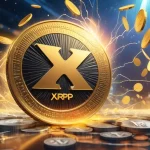Ripple CTO Tackles XRPL 2025 Slump: 30-40% Activity Drop Sparks Concern

Ripple CTO David Schwartz Confronts XRPL’s 2025 Activity Slump: Challenges, Defenses, and Future Hopes
Ripple’s XRP Ledger (XRPL) is catching heat as a brutal 30% to 40% drop in activity during Q1 2025 has the crypto community buzzing with doubt. Ripple’s Chief Technology Officer, David Schwartz, stepped up to tackle these concerns, sparked by sharp questions from commentator Andrei Jikh, offering explanations and a vision for XRP’s relevance. Let’s tear into the hard numbers, Schwartz’s arguments, and the gritty reality of where Ripple fits in the relentless push for decentralized finance.
- Steep Decline: XRPL activity plummets 30%-40% in wallet creation and transactions in Q1 2025.
- Schwartz’s Take: Slow adoption tied to institutional off-chain bias; defends XRP’s volatility as a liquidity asset.
- Market Struggles: XRP trades at $3.15, down 2.6% weekly, with risk of deeper drops.
Background on XRPL and Ripple
For those new to the scene, Ripple, launched in 2012, is a heavyweight in blockchain-based cross-border payments, boasting over 300 bank partnerships. The XRP Ledger (XRPL) is its underlying decentralized network, designed for fast, low-cost transactions using XRP as its native cryptocurrency. Often pitched as a game-changer for global finance, XRPL aims to outpace traditional systems like SWIFT with settlement times of 3-5 seconds. Yet, despite years of hype and Ripple’s enterprise focus, on-chain activity tells a different story—one of struggle and skepticism. Let’s dig deeper into what’s dragging XRPL down and whether it can claw its way back.
XRPL’s Alarming Activity Slump
The numbers don’t lie, and they’re ugly. Ripple’s Q1 2025 report shows a 30% to 40% nosedive in key metrics like new wallet creation and transaction volume on XRPL. Hard figures? Nowhere to be found. This opacity from a company pushing for trust in finance is a gut punch. For a network once hyped as the Usain Bolt of payments, XRPL looks stuck at the starting line. Critics like Andrei Jikh are asking the obvious: with all those bank partnerships, why isn’t adoption soaring? Is this a temporary hiccup or a sign of deeper cracks in Ripple’s foundation? Community discussions reflect similar frustrations, with many dissecting this sharp decline in XRPL activity.
Transparency—or the lack of it—is a sore spot. If Ripple wants to win over skeptics in a space already burned by scams and empty promises, playing hide-and-seek with data isn’t the move. Releasing detailed metrics on wallets and transactions could rebuild some faith, but for now, we’re left with percentages and guesswork. Compared to Bitcoin’s unshakeable grassroots momentum or Ethereum’s DeFi explosion, XRPL’s decline feels like a warning siren.
Institutional Roadblocks: Even Ripple Won’t Use Its Own Tech
Schwartz doesn’t dodge the elephant in the room: institutions, Ripple’s core audience, aren’t touching XRPL with a ten-foot pole. Why? Compliance and security nightmares. Even Ripple itself avoids using the XRPL Decentralized Exchange (DEX)—a platform for swapping assets directly on the blockchain—for payments. The risk of unverified entities, or worse, illicit actors providing liquidity, is too high. Schwartz laid it bare:
“Even Ripple can’t use the XRPL DEX for payments yet because we can’t be sure a terrorist won’t provide the liquidity for a payment. Features like permissioned domains will address this.”
Let’s unpack that. Permissioned domains, in simple terms, are like a bouncer at a club—vetting who gets to play in the liquidity pool to ensure they’re legit. It’s a potential fix for institutional trust issues, allowing regulated entities to participate without fearing regulatory backlash. But the timeline for this feature is fuzzy at best. Until then, big players stick to off-chain solutions where they control the sandbox. This isn’t unique to Ripple; it’s a systemic aversion to the wild, decentralized frontier. Still, if your own creator won’t ride the highway they built, what hope is there for mass adoption? For deeper insights, explore research on XRPL’s institutional adoption challenges.
XRP’s Volatility: Feature or Flaw in a Stablecoin World?
While institutions hesitate on XRPL, XRP—the token itself—faces a separate fight against the stablecoin tsunami. Trading at $3.15 after a 2.6% weekly dip, XRP’s price swings look like a liability next to the steady pegs of USDC or USDT. Schwartz, though, flips the script, insisting volatility can be a strength for liquidity and asset conversion. Think of XRP as a currency exchange kiosk at a chaotic airport—rates fluctuate, but it’s there when you need a quick swap between mismatched assets. He put it succinctly:
“A bridge currency only works if someone is holding it so that you can get it precisely when you need it.”
It’s a niche but valid case, especially for trades where the final asset isn’t locked in. Yet, let’s not drink the Kool-Aid just yet. Stablecoins are gobbling up market share for payments and settlements, with Circle’s USDC spanning multiple blockchains for seamless interoperability. Schwartz counters that no single stablecoin will dominate due to regulatory splintering—think USDC in the West, a yuan-backed token in China, and so on. He argued:
“If one stablecoin wins, then no. You would just use that stablecoin as the bridge currency. But I don’t think one stablecoin can win for several reasons… If we’re in a multi-stablecoin world, it still makes sense to have a bridge asset that serves the long tail of tokenized securities, loan portfolios, and so on.”
Fair point. A fragmented stablecoin landscape could leave room for a neutral intermediary like XRP. But with giants like Tether already crossing borders with near-monopoly grip, the need for a volatile bridge feels less urgent to many. XRP’s battle for relevance here is uphill, and the market’s obsession with stability isn’t fading anytime soon. For expert takes on this debate, check out perspectives on XRP as a bridge currency versus stablecoins.
Tokenization Hopes: Can XRPL Ride the RWA Wave?
Schwartz sees a lifeline for XRPL in the booming trend of tokenized real-world assets (RWAs)—think digitizing a $1 million property into 1,000 blockchain shares, letting everyday investors buy in for a grand each. It’s revolutionizing finance by unlocking liquidity and fractional ownership. Schwartz pushes interoperability over walled gardens, drawing a parallel to USDC’s multi-chain strategy:
“Why don’t they launch USDC only on their own blockchain? You can see why that’s obviously silly. I think the same kind of logic will apply to tokenized real-world assets over the next year or two.”
XRPL, with its dirt-cheap fees and near-instant 3-5 second transaction finality, could theoretically shine as a hub for RWAs. Imagine tokenized bonds or loans zipping across borders without Ethereum’s notorious gas fees, which often hit double digits during peak congestion. But here’s the catch: Ethereum’s DeFi ecosystem, with platforms like Uniswap clocking $3 trillion in trading volume, already dominates this space. XRPL’s declining activity suggests it’s not the go-to pick—yet. Competitors like Solana and Avalanche, also chasing scalability and institutional use, add more heat. Without standout RWA projects or partnerships, XRPL’s tokenization dream remains speculative. Schwartz’s vision has legs, but execution is everything. For a broader analysis, look into XRPL’s challenges with tokenized assets.
Centralization Fears: Is XRPL Under Uncle Sam’s Thumb?
Another thorn in Ripple’s side is the centralization stink. Being a U.S.-based company, especially amidst the lingering SEC lawsuit since 2020, Ripple often gets painted as XRPL’s puppet master. International players, jittery about U.S. regulatory overreach, hesitate to dive in. Schwartz fires back, stressing that XRPL is a decentralized network, separate from Ripple’s enterprise products which do fall under local laws. It’s a vital distinction, but trust is a fragile beast. Geopolitical tensions and regulatory uncertainty—amplified by the SEC’s ongoing hammer—mean perception often trumps technical reality. For a blockchain aiming for global reach, this U.S.-centric shadow is a persistent drag, no matter how decentralized the code claims to be.
XRP Market Woes: A Slippery Slope Below $2.80
Zooming into XRP’s market performance, the picture isn’t rosy. At $3.15, it’s down 2.6% over the past week, teetering on support levels at $2.92, $2.83, and a critical $2.80. Snap that last barrier, and technical analysts warn of a steeper slide—potentially into the low $2 range. This isn’t just Ripple’s headache; altcoins broadly are feeling the squeeze as Bitcoin holds its store-of-value crown. XRP’s historical volatility, with peaks near $3.40 in 2018 and troughs below $0.20 during bear markets, shows it’s no stranger to wild rides. Yet, each dip chips away at confidence, especially when XRPL’s adoption lags. On the flip side, some institutional interest persists—Amber International recently parked XRP in its $100 million AI-backed crypto reserve alongside Bitcoin and Ethereum. A silver lining, sure, but a small one against a bearish tide. For more on XRP’s price struggles, see this analysis of XRPL activity and adoption challenges.
Community Sentiment: Frustration and Flickers of Hope
Beyond cold data, the XRP community is a mixed bag. On platforms like Twitter and Reddit, holders vent frustration over XRPL’s slump and Ripple’s tight-lipped reporting. “Where’s the utility?” is a common cry, with many feeling sidelined as stablecoins and DeFi on Ethereum steal the thunder. Others cling to Schwartz’s bridge currency pitch, eyeing XRP’s potential in niche markets. Developer activity on XRPL, while not dead, pales compared to Ethereum or Solana’s bustling ecosystems—GitHub commits and dApp growth are underwhelming per public metrics. This grassroots pulse mirrors the broader challenge: Ripple’s top-down, institutional focus hasn’t ignited the decentralized fire Bitcoin thrives on. Can XRPL rally a passionate base, or is it doomed to be a corporate experiment? Community reactions to Schwartz’s views can be found in discussions like this thread on XRPL activity concerns.
Competitive Landscape: XRPL vs. the Blockchain Titans
Let’s widen the lens. XRPL isn’t floundering in a vacuum. Ethereum’s DeFi juggernauts like Uniswap and Aave dominate with billions in locked value and user engagement. Solana, with its sub-second transactions, is snagging gaming and NFT projects left and right. Avalanche woos institutions with customizable subnets. XRPL’s speed and cost advantages—transactions at fractions of a cent—sound great on paper, but lack of killer dApps or developer buzz keeps it in the shadows. Bitcoin, our north star of decentralization, sidesteps these adoption games altogether, cementing itself as digital gold while altcoins scrap for relevance. XRPL’s niche focus on payments and tokenization has merit, but without a vibrant ecosystem or community push, it risks being a footnote in the DeFi era.
What’s Next for Ripple and XRPL?
Peering ahead, Ripple’s got cards to play—if it plays them right. Beyond permissioned domains, whispers of new features like enhanced smart contracts on XRPL could lure developers and RWA projects. Regulatory clarity, especially resolving the SEC saga, could unshackle institutional hesitance, though a final ruling remains elusive. Potential partnerships—say, with tokenized asset platforms or regional stablecoin issuers—might spark on-chain growth. Schwartz’s multi-stablecoin world thesis hinges on XRPL becoming a cross-chain hub, but that needs cold, hard integrations, not just theory. For now, the clock is ticking. With DeFi and stablecoins racing forward, XRPL’s window to pivot and prove itself is shrinking fast. Schwartz’s thoughts on volatility and tokenized assets are further explored in this Q&A on XRP dynamics.
Key Takeaways and Questions on XRPL’s Struggles and XRP’s Future
- Why has XRPL tanked with a 30%-40% activity drop in 2025?
Institutions are dodging XRPL due to compliance fears over unverified liquidity providers—even Ripple steers clear of its own DEX, waiting on fixes like permissioned domains to ensure trust. - How does XRP’s volatility hold up against stablecoins like USDC?
Schwartz champions XRP’s price swings as a liquidity tool for asset swaps in niche scenarios, though stablecoins dominate payments with their pegged stability, challenging XRP’s turf. - Can XRPL rebound by tapping tokenized real-world assets?
Possibly, with its speed and low fees as selling points for RWAs like digital securities, but Ethereum’s DeFi giants and rivals like Solana outpace XRPL in ecosystem traction. - Is XRPL decentralized despite Ripple’s U.S. ties?
Schwartz insists XRPL runs independently of Ripple’s regulated operations, yet global users remain wary of U.S. oversight risks, especially amid the SEC lawsuit shadow. - What’s the fallout if XRP’s price cracks below $2.80?
A break could trigger sharper declines, signaling eroded faith in Ripple’s ecosystem as altcoin sentiment wavers and XRPL adoption stalls.
Ripple and XRPL sit at a brutal crossroads. Schwartz’s defenses—XRP as a bridge in a splintered stablecoin future, XRPL’s shot at tokenization—aren’t baseless. But the stark reality of plummeting activity, murky transparency, and a shaky token price screams for caution. Bitcoin remains the bedrock of decentralization we rally behind, thriving on grassroots grit, while XRPL’s institutional bet feels like a slow grind. There’s space in this financial uprising for niche players like Ripple if they deliver results, not just rhetoric. Stablecoins and DeFi aren’t waiting around, and neither should XRPL. Will Ripple pivot fast enough to reclaim its mojo, or is it destined to linger as a cautionary tale in blockchain’s ruthless march forward? Eyes peeled—this fight’s far from over. For the latest on Schwartz addressing these concerns, see this report on Ripple CTO’s response to XRPL activity drop.



